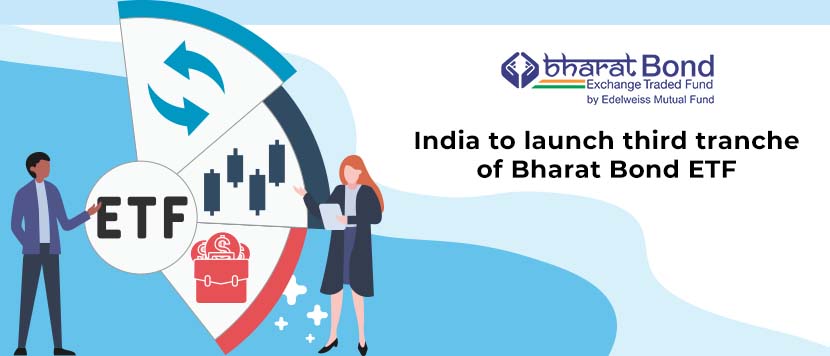India to launch Third Tranche of Bharat Bond ETFs

Last Updated: 1st July 2022 - 06:18 pm
After 2 successful rounds of PSUs raising debt through Bharat Bond ETFs, the government is all set for the third tranche. This tranche is expected to hit the market around December this year and it will once again target to raise over Rs.10,000 crore through the Bharat Bond ETF issue. The Bharat Bond ETF third tranche will be managed by Edelweiss AMC.
Bharat Bond ETF is an exchanged traded fund which will invest purely in PSU debt. To maintain quality of the ETF, the investments are currently being made only in “AAA” rated bonds. Currently, the government is working out the funding requirements of the PSUs and based on that the final amount to be raised via the third tranche will be determined.
The Bharat Bond ETF has been a win-win for both sides. The investors get access to a portfolio of high quality PSU debt paper with diversified risk profile. The PSUs, on the other hand, get a centralized fund raising platform with a unique value proposition. It smoothens out the fund raising and capex for PSUs without going back to the debt markets again.
Due to these advantages that investors see in these bonds, the Bharat Bond ETF tranches 1 and 2 were extremely successful. The first tranche of Bharat Bond ETF was made in Dec-19 and that collected Rs.12,400 crore. The second tranche of Bharat Bond ETF was made in Jul-20 and that raised Rs.11,000 crore. With the markets flush with liquidity, the government is expecting a bigger response to the third tranche of ETFs.
The maturity options in the Bharat Bond ETFs vary from tranche to tranche. The first tranche in Dec-19 offered maturity time frames of 3 years and 10 years. However, the second tranche in Jul-20 offered maturity time frames of 5 years and 12 years. It remains to be seen what maturities the Tranche 3 of Bharat Bond ETFs offers to investors.
The smart response to the first two tranches of the Bharat Bond ETF shows that there is adequate appetite in the market for high grade debt, even if means lower yields. However, this time around it remains to be seen if investors would want to get locked into long term debt assets at a time when bond yields are threatening to go higher.
Also Read About - Types of ETF
- Flat ₹20 Brokerage
- Next-gen Trading
- Advance Charting
- Actionable Ideas
Trending on 5paisa
Indian Stock Market Related Articles
Disclaimer: Investment in securities market are subject to market risks, read all the related documents carefully before investing. For detailed disclaimer please Click here.
 5paisa Research Team
5paisa Research Team
 Sachin Gupta
Sachin Gupta




